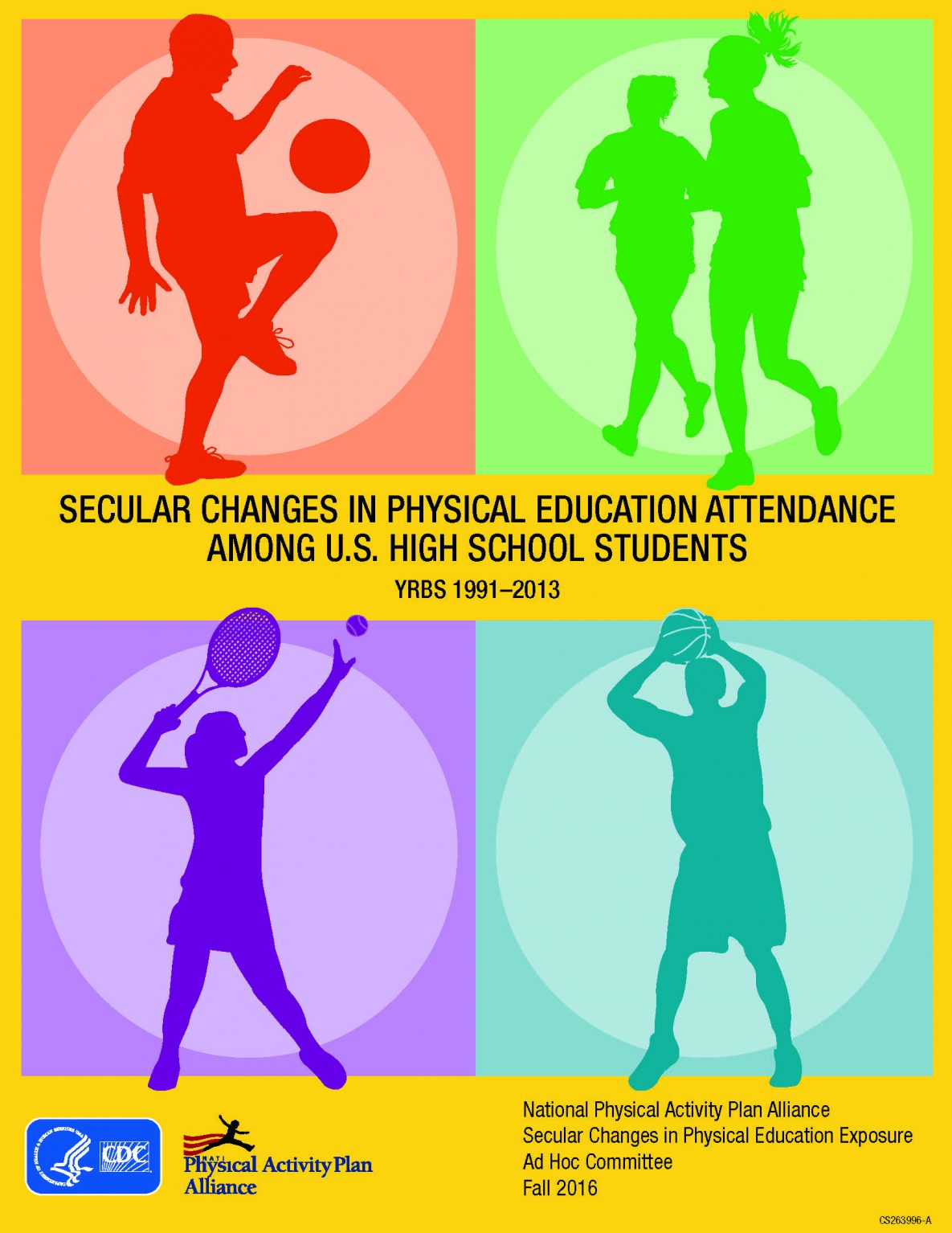Physical Education
Physical education is the foundation of a Comprehensive School Physical Activity Program.1, 2 It is an academic subject characterized by a planned, sequential K–12 curriculum (course of study) that is based on the national standards for physical education.2–4 Physical education provides cognitive content and instruction designed to develop motor skills, knowledge, and behaviors for physical activity and physical fitness.2–4 Supporting schools to establish physical education daily can provide students with the ability and confidence to be physically active for a lifetime.2–4
There are many benefits of physical education in schools. When students get physical education, they can5-7:
- Increase their level of physical activity.
- Improve their grades and standardized test scores.
- Stay on-task in the classroom.
Increased time spent in physical education does not negatively affect students’ academic achievement.
Strengthen Physical Education in Schools [PDF – 437 KB]—This data brief defines physical education, provides a snapshot of current physical education practices in the United States, and highlights ways to improve physical education through national guidance and practical strategies and resources. This was developed by Springboard to Active Schools in collaboration with CDC.
Secular Changes in Physical Education Attendance Among U.S. High School Students, YRBS 1991–2013
The Secular Changes in Physical Education Attendance Among U.S. High School Students report [PDF – 3 MB] explains the secular changes (long-term trends) in physical education attendance among US high school students over the past two decades. Between 1991 and 2013, US high school students’ participation in school-based physical education classes remained stable, but at a level much lower than the national recommendation of daily physical education. In order to maximize the benefits of physical education, the adoption of policies and programs aimed at increasing participation in physical education among all US students should be prioritized. Download the report for detailed, nationwide findings.
Physical Education Analysis Tool (PECAT)
The Physical Education Curriculum Analysis Tool (PECAT) [PDF – 6 MB] is a self-assessment and planning guide developed by CDC. It is designed to help school districts and schools conduct clear, complete, and consistent analyses of physical education curricula, based upon national physical education standards.
Visit our PECAT page to learn more about how schools can use this tool.
- CDC Monitoring Student Fitness Levels1 [PDF – 1.64 MB]
- CDC Ideas for Parents: Physical Education [PDF – 2 MB]
- SHAPE America: The Essential Components of Physical Education (2015) [PDF – 391 KB]
- SHAPE America: Appropriate Instructional Practice Guidelines for Elementary, Middle School, and High School Physical Education [PDF – 675 KB]
- SHAPE America: National Standards and Grade-Level Outcomes for K–12 Physical Education 2014
- SHAPE America: National Standards for K–12 Physical Education (2013)
- SHAPE America Resources
- Youth Compendium of Physical Activities for Physical Education Teachers (2018) [PDF – 145 KB]
- Social Emotional Learning Policies and Physical Education


